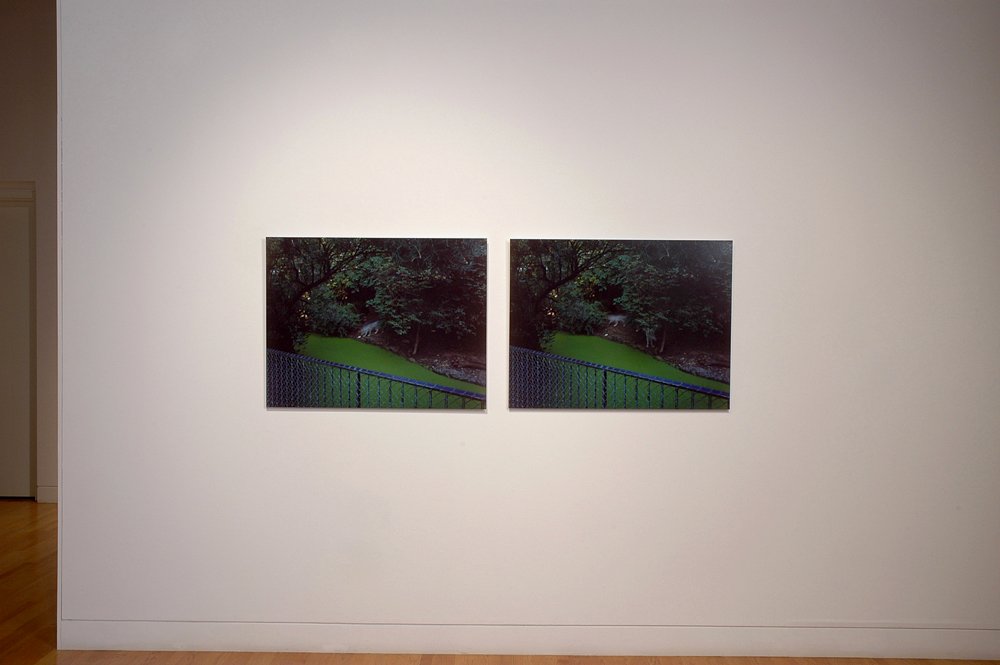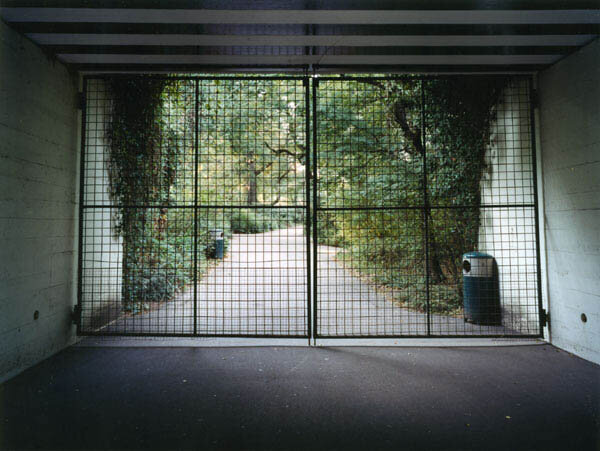Eve K., Zoosemiotics:
The Visible in the Backyard of the Invisible
Cognition occurs through observation and examination. The resulting knowledge is passed on through signs, which are sensually perceptible stimuli in the first place and, as such, are assignable to visual, linguistic, auditory, tactile, and olfactory signs. The science of signs is called semiotics. Sign processes between beings are also called semioses (from the Greek semeion).
In her series Zoosemiotics, the artist Eve K. deals with a section of semiotics: biosemiotics or zoosemiotics. One goal of biosemiotics research is to demonstrate an evolutionary development in all communicative processes of the animal world. However, in the series Zoosemiotics, Eve K. deals less with the sign mediated communication between beings of one or more species, but rather with the relation between the artificial nature of the zoo understood both as a sign itself and as a language, thereby highlighting a narrative component. The artist displaces the focus of zoosemiotics by disclosing the relationship between nature and narration, or rather between nature and its sign processes. Nature seen as a language becomes the vessel of multiple narratives.
In Eve K.'s photographs, the artificial nature or landscape of the zoo is not merely framed as decoration or scenery in front of which dialogues and the exchange of signs can take place. The artist does not make any attempt to efface disturbing elements such as a grid, a garbage can or a cage door. On the contrary, portions of the landscape are being disturbed at all times. As a consequence, nature itself is brought to light as an inherently artificial construct. The artist even goes one step further: the stages of scenery upon which protagonists – in this case animals – usually perform appear to be emptied of the presence of these figures. No living beings can be discerned. However, if we were only to look closer, we would discover traces of human beings or animals seen mostly from behind, and hidden in the scenery or deformed by a long exposure. This shrewdness runs through Eve K.'s complete work. There is always something missing, as is the case with a series of unfinished or free sentences. In particular, the scenes in Zoosemiotics follow the process of the hidden narration in nature. Does something hide from our gaze? The spectator is invited to make the invisible visible. The imaginary scenery seeks our participation and imagination. The stories are incomplete and need to be reinvented again and again. We become part of the picture as we look for signs, which could allow us to complete a partial narrative. For example, in Hyppotram, the title suggests on one hand a hypothesis, and on the other hand the presence of a hippopotamus. But where is the animal and what are we supposed to assume? After more precise contemplation, we realize that the water in the foreground, which is opposed to the background, is in motion. Furthermore, in the background a train is passing by (a fact that brings us back to the title), and its traces change into a sort of frieze or iron wall. The artist succeeds in connecting different time levels by means of a long exposure, and to charge the scenes in a narrative way through the traces of time resulting from the scenes. The titles suggest a further level of interpretation and comprehension to the stories. For example, in Chemin de la connaissance, Eve K. seeks to connect content (a closed entrance door at the zoo photographed from the inside) and title (knowledge per se, perhaps the consciousness or the discoveries we make on our way?) with formal criteria such as structure, composition, and perspective.
The visible reality that the artist bears to our minds is only an apparently revealed one. In fact it holds an optical and narrative potential:
“Everything we see is accompanied by the shadow of the unseen, the visible appears in the courtyard of the invisible. “
The information that Eve K. gives us is complex. Her pictures contain many sub-signs, which can function themselves as sub-signs in certain iconographical contexts. Signs are carriers of information and are therefore bound to their function. They also always depend on the objects they designate. That dependence means that they are changeable. With every discovery and achievement, they change. It is precisely this semiotic phenomenon that takes place in the contemplation of Eve K.’s pictures: we search, we discover, we understand. But this process repeats itself again and again, and we discover new signs and new information, thereby opening up a new story for us. This process repeats itself as long as we deal with the pictures, until we detach our eyes from the pictures and take the histories home with us.
Anna Bonacci










